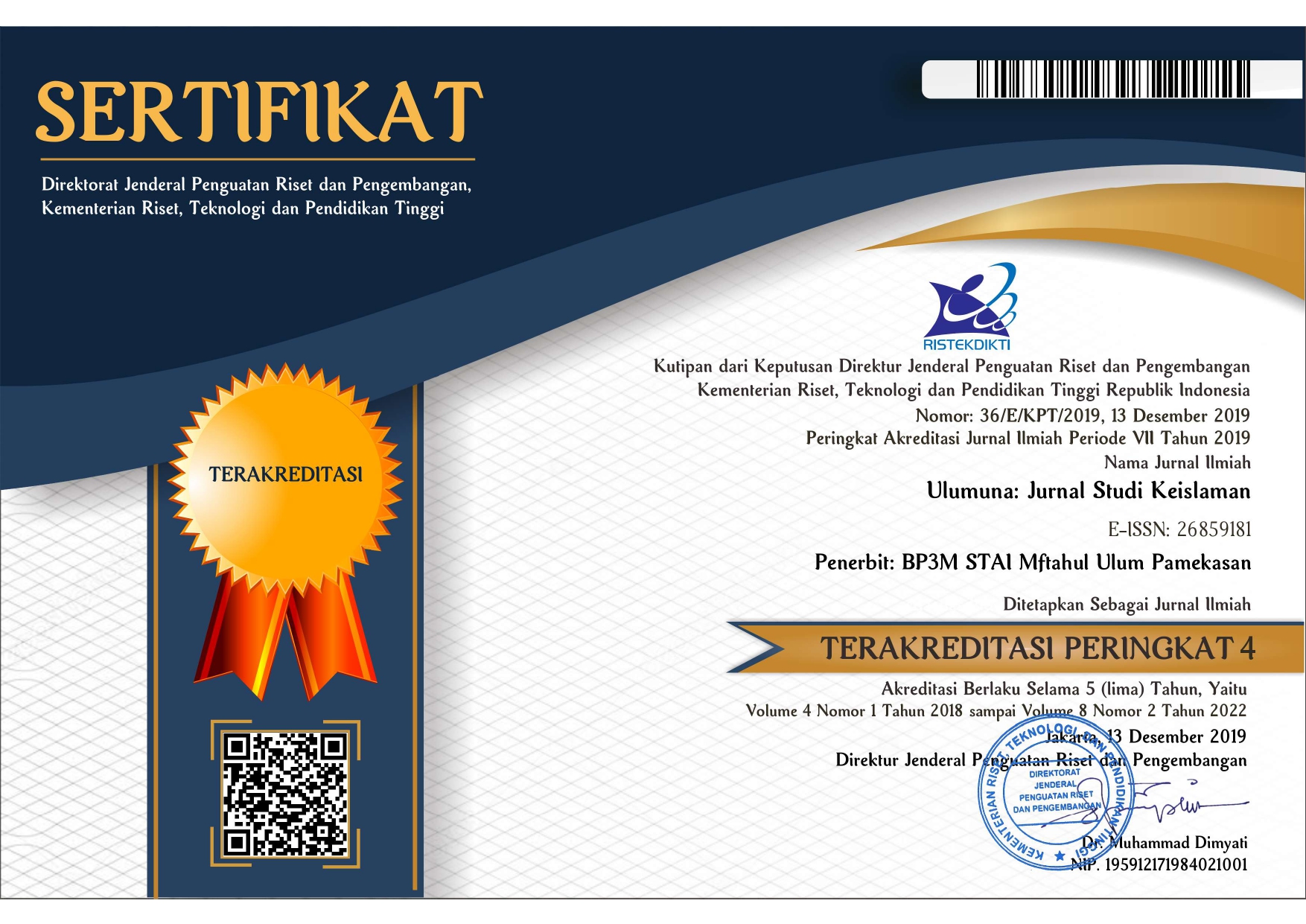Urgensi Teori Maqashid al-Syariah Sebagai Metodologi Hukum Islam
(Analisis Nalar konstruksi Maqashid Al-Syariah Imam Al-Syatibi)
DOI:
https://doi.org/10.36420/ju.v10i1.7558Abstract
Maqashid Sharia explicitly did not appear since the prophetic period but the embryo of maqashid sharia was found during the Prophet Muhammad SAW both from the interpretation of revelation or in the context of the hadith of the Prophet Muhammad SAW. maqashid sharia discourse until now always appears in some circles of ushuliyin scholars who aim to examine more deeply whether maqashid sharia is part of ushul fiqh or as an independent discipline as a methodology of Islamic law. This research intends to describe the history of the emergence of maqashid sharia theory, its position in Islamic studies and its urgency as a methodology of Islamic Law. The result of this research is that Imam Shafi'i who became the pioneer of the early emergence of the method of determining the law with Al-Risalah which was then squeezed again by Imam Al-Haromain, Izzuddin bin Abd Salam and Imam Ghazali so that maqashid sharia appeared as a development of the term maslahah. Then Imam al-Syatibi who emphasized this theory with a special discussion in his work al-muwafaqot. Furthermore, the position of maqashid sharia in Islamic studies becomes very urgent for the perfection of the purpose of sharia, namely maslahat for humans. In maqashid aims to get legal protection, it is a human obligation to know it in order to achieve protection called al-dharuriyat al-khams. In conclusion, maqashid sharia does not break away from ushul fiqh, but it is the development that then becomes the basis of the maqashid sharia.Published
2024-06-26
How to Cite
Muchlis, M., & Rois, C. . (2024). Urgensi Teori Maqashid al-Syariah Sebagai Metodologi Hukum Islam: (Analisis Nalar konstruksi Maqashid Al-Syariah Imam Al-Syatibi). Ulumuna: Jurnal Studi Keislaman, 10(1), 17–33. https://doi.org/10.36420/ju.v10i1.7558
Issue
Section
Articles
License
Copyright (c) 2024 Muchlis Muchlis, Choirur Rois

This work is licensed under a Creative Commons Attribution-ShareAlike 4.0 International License.
Jurnal ini terbuka untuk umun dan bisa digunakan untuk kepentingan ilmiah lainnyaÂ






